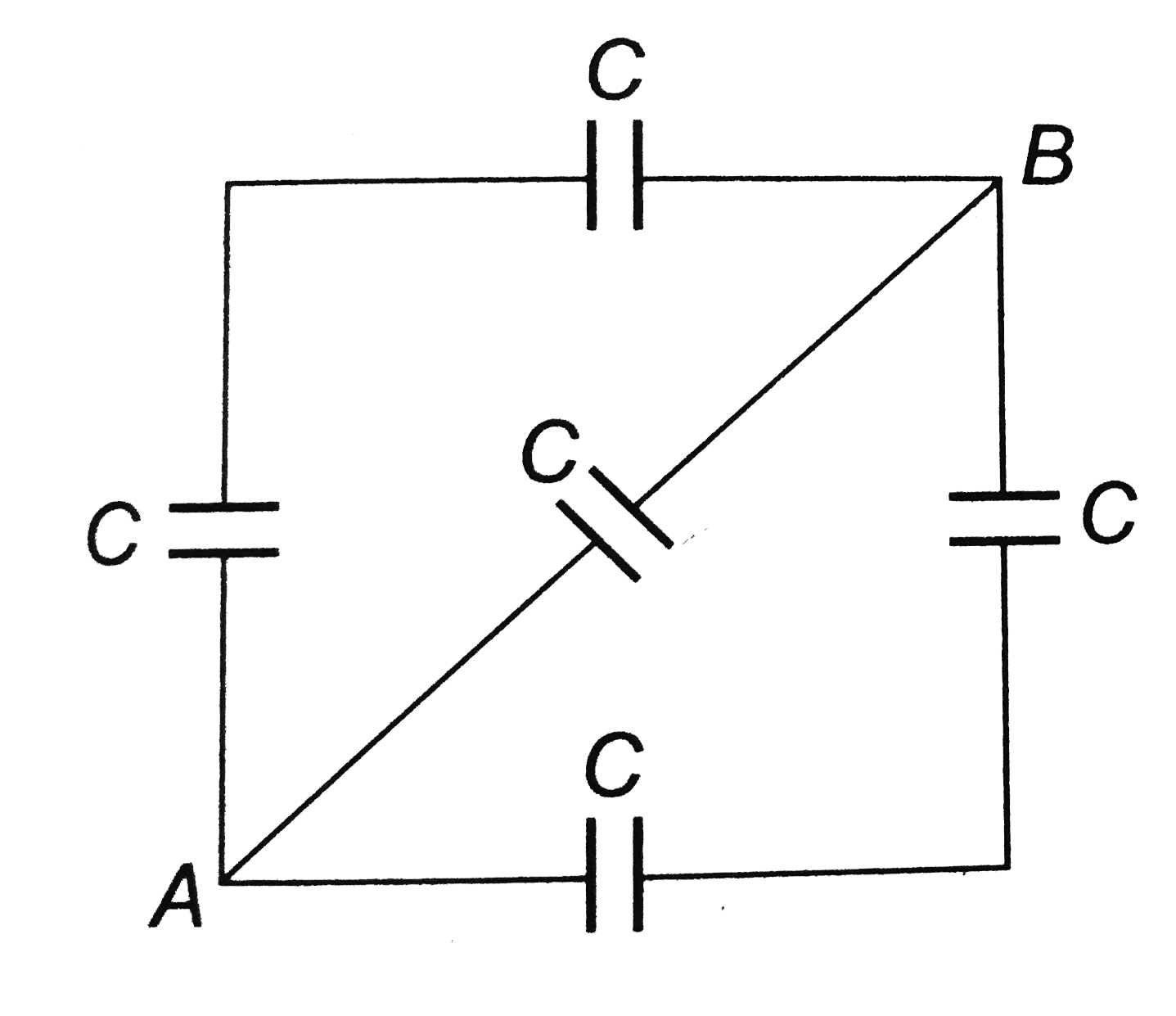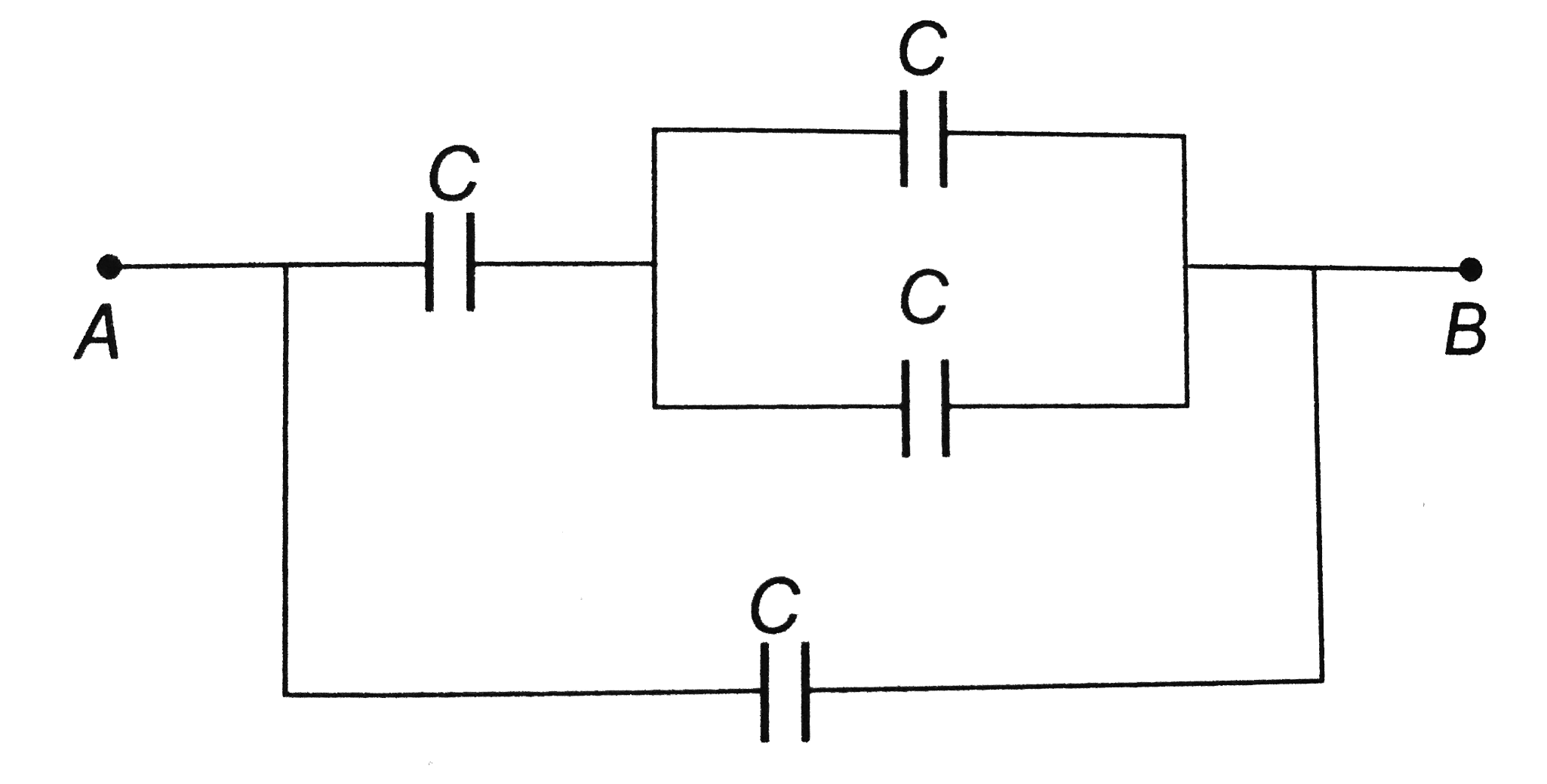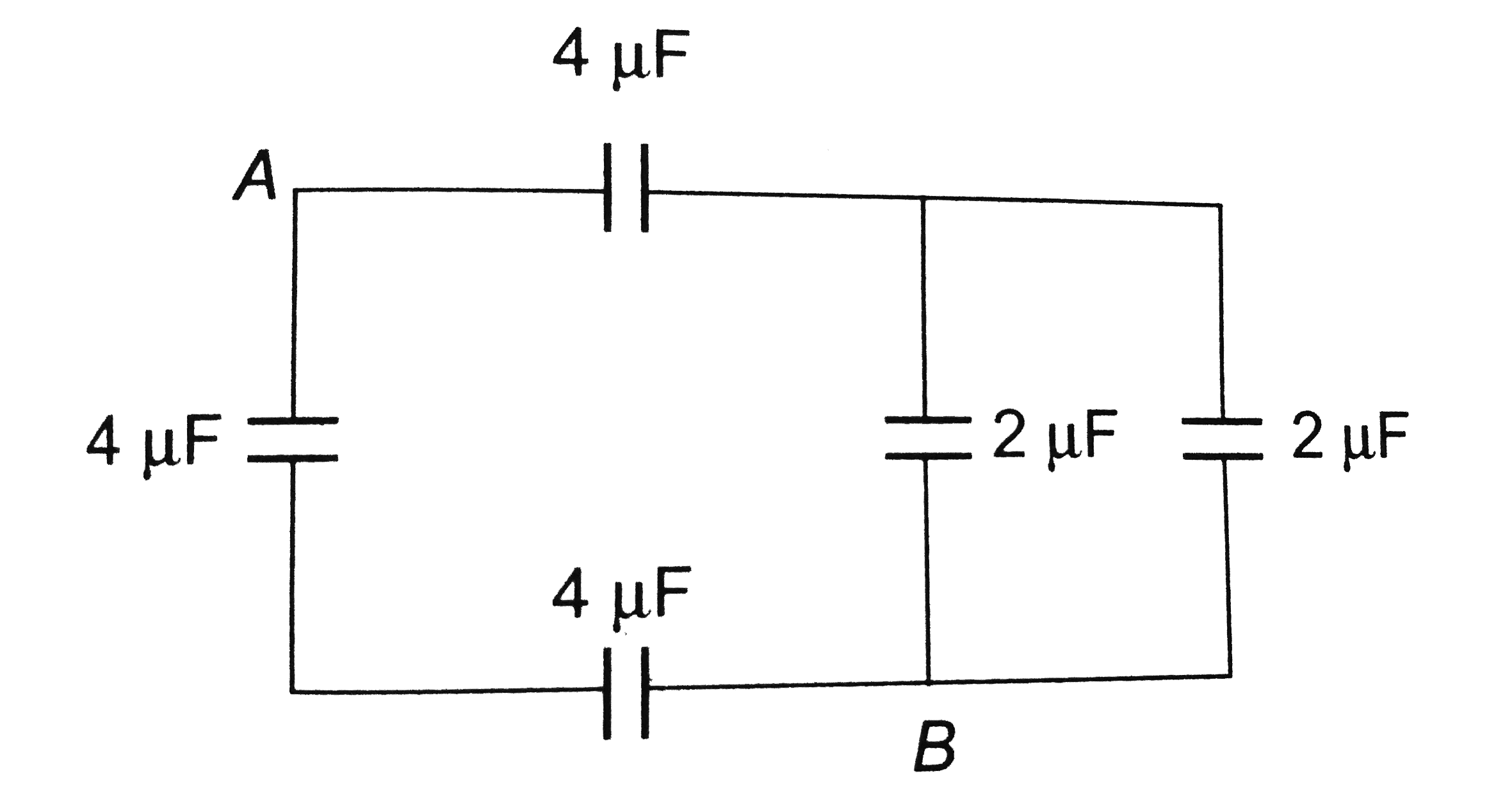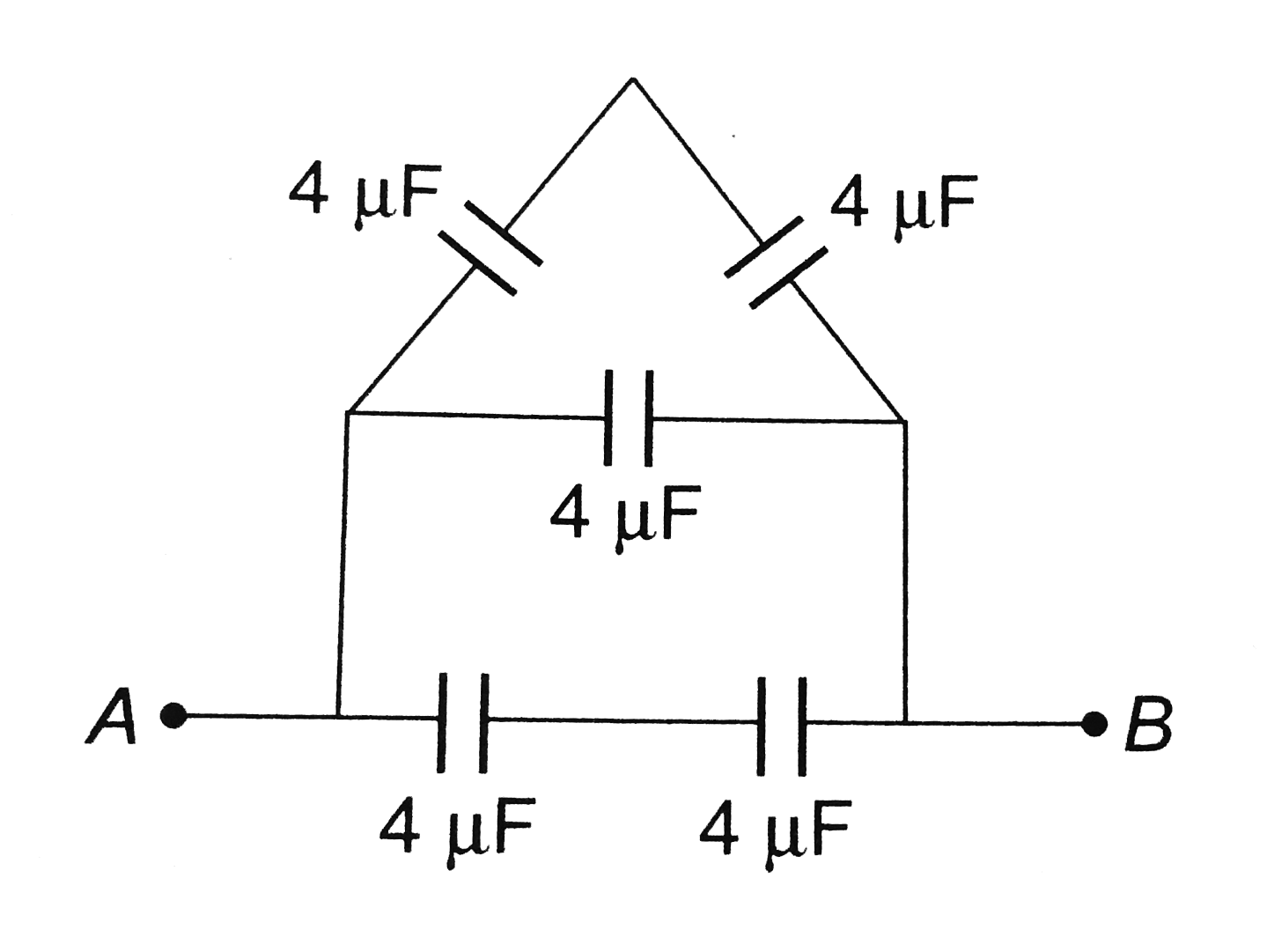Complete Solutions to Check point 2.5 of chapter ELECTROSTATIC POTENTIAL AND CAPACITORS of Class 12 book with complete answers and questions
| Class 12 | PHYSICS |
| Chapter | ELECTROSTATIC POTENTIAL AND CAPACITORS |
| DC PANDEY NEET | Check point 2.5 |
| Number Of Questions | 20 |
| Academic Year | 2023-24 |
Three capacitors each of capacitance `C` and of breakdown voltage `V` are joined in series. The capacitance and breakdown voltage of the combination will be
02:23View SolutionIn given circuit when switch S has been closed, then charge on capacitor A and B respectively
 View Solution
View SolutionThree condensers each of capacitance 2F are put in series. The resultant capacitance is
01:42View SolutionTwo capacitors of capacitance `2 muF` and `3 muF` are joined in series. Outer plate of first capacitor is at `1000` volt and outer plate of second capacitor is earthed (grounded). Now the potential on inner plate of each capacitor will be
02:43View SolutionA series combination of three capacitors of capacities `1 muF, 2muF` and `8 muF` is connected to a battery of e.m.f. `13 volt`. The potential difference across the plates of `2 muF` capacitor will be
03:04View SolutionA parallel plate capacitor is made by stacking n equally spaced plates connected alternatively. If the capacitance between any two adjacent plates is 'C' then the resultant capacitance is
05:49View SolutionFour capacitors of equal capacitance have an equivalent capacitance `C_(1)` when connected in series and an equivalent capacitance `C_(2)` when connected in parallel. The ratio `(C_(1))/(C_(2))` is
02:26View SolutionThree capacitors of capacitance `3 muF` are connected in a circuit. Then, their maximum and minimum capacitance will be
02:37View SolutionThree capacitors each of capacity `4 muF` are to be connected in such a way that the effective capacitance is `6 muF`. This can be done by
01:41View SolutionIn the figure shown, the effective capacitance between the points `A` and `B`, if each has capacitance `C`, is
 02:26View Solution
02:26View SolutionFour equal capacitors, each of capacity `C`, are arranged as shown. The effective capacitance between `A` and `B` is
 02:02View Solution
02:02View SolutionIn the circuit as shown in the figure the effective capacitance between `A` and `B` is
 03:08View Solution
03:08View SolutionThe charge on any of the `2 muF` capacitors and `1 muF` capacitor will be given respectively (in `muC`) as
 01:43View Solution
01:43View SolutionEquivalent capacitance between `A` and `B` is
 01:45View Solution
01:45View SolutionThe energy stored in a capacitor of capacitance `100 muF` is 50 J. Its potential difference is
01:39View SolutionThe potential energy of a charged parallel plate capacitor is `U_(0)`. If a slab of dielectric constant `K` is inserted between the plates, then the new potential energy will be
02:33View SolutionA series combination of `n_(1)` capacitors, each of value `C_(1)`, is charged by a source of potential difference `4 V`. When another parallel combination of `n_(2)` capacitors, each of value `C_(2)`, is charged by a source of potential difference `V`, it has same (total) energy stored in it, as the first combination has. the value of `C_(2)`, in terms of `C_(1)`, is then
03:29View SolutionIf the charge on a capacitor is increased by 2C, then the energy stored in it increases by 21 %. The original charge on the capacitor is
03:22View SolutionA capacitor of capacitance value `1 muF` is charged to 30 V and the battery is then disconnected. If it is connected across a `2 muF` capacotor, then the energy lost by the system is
04:11View SolutionA parallel plate capacitor is charged to a potential difference of 50 volts. It is then discharged through a resistance for 2 seconds and its potential drops by 10 volts. Calculate the fraction of energy stored in the capacitance.
03:16View Solution
Check point 2.5 questions and complete solutions for chapter ELECTROSTATIC POTENTIAL AND CAPACITORS of DC PANDEY PHYSICS (HINGLISH) of Class 12
